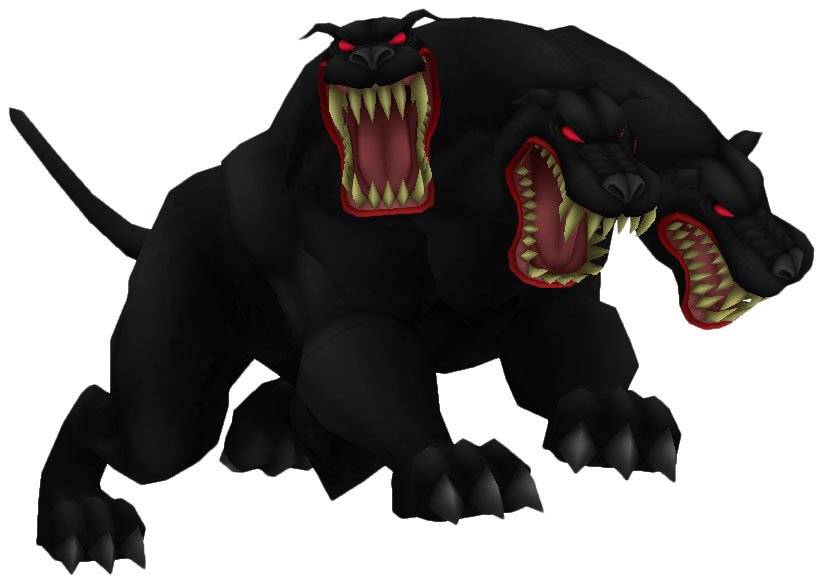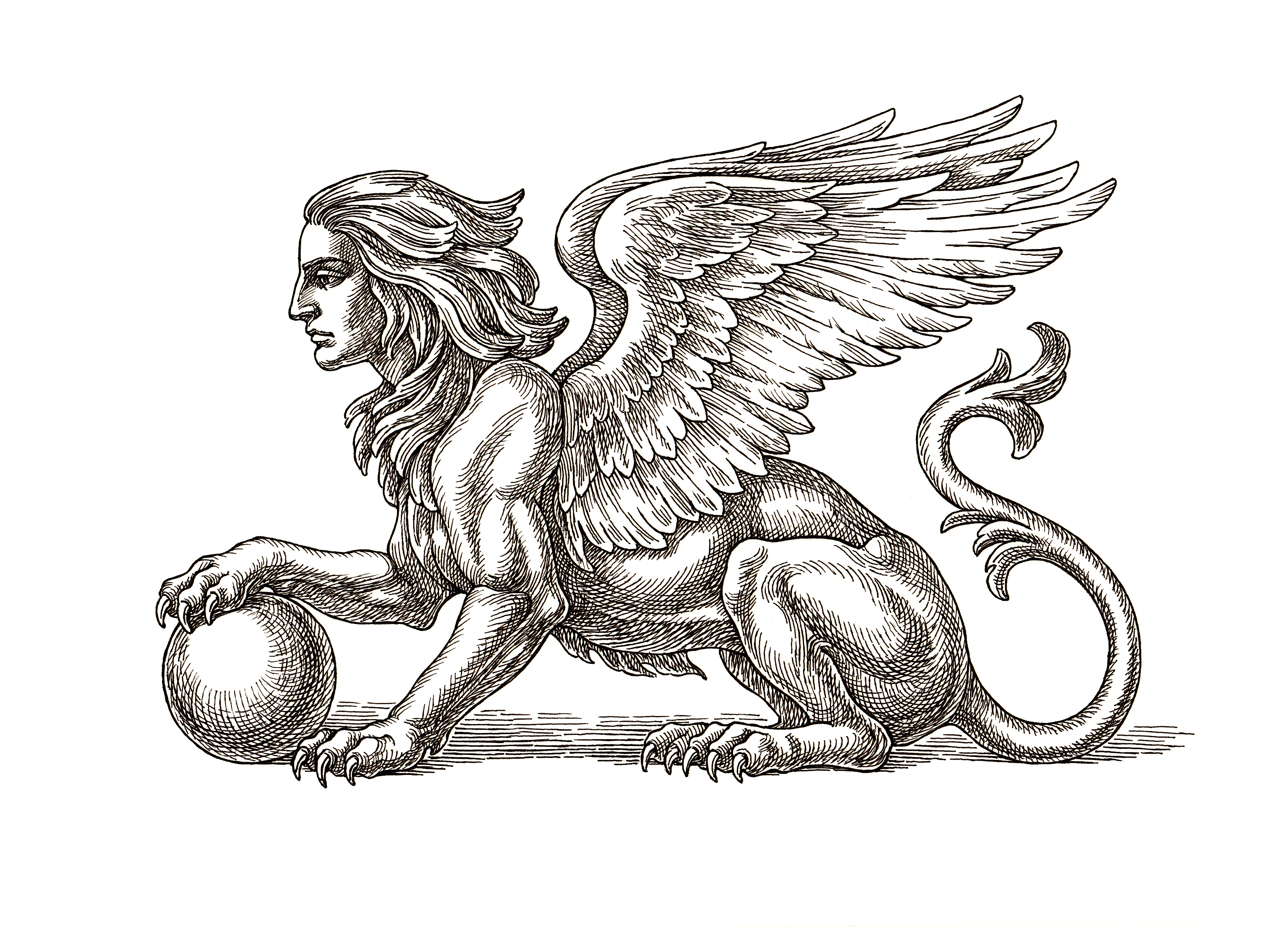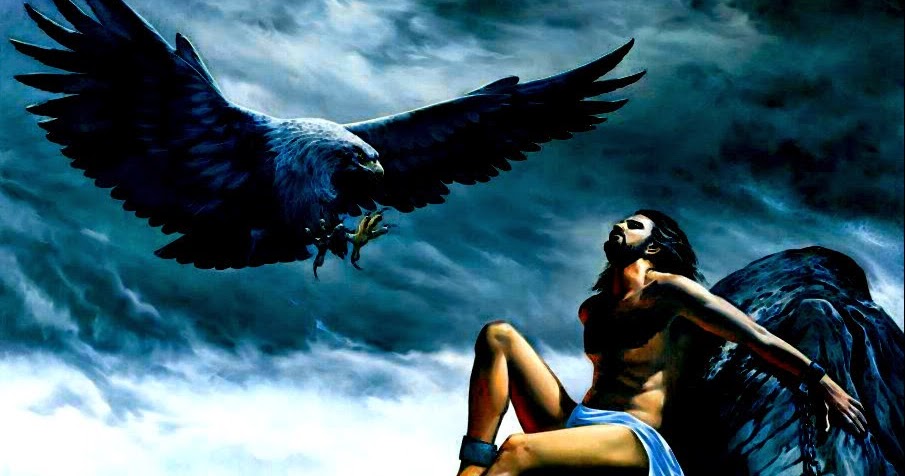
Greek mythology is full of tales of heroes and monsters. Heroes are usually demigods who go on quests to protect or avenge their mortal families. These quests usually involve killing monsters. But what they never stop to think about is whether monsters have families too. Turns out they have a family – a big not very happy family.
The “father of all monsters” in Greek mythology was Typhon, sometimes called Typhoeus. The last child of Gaia and Tartarus, he was a fire-breathing dragon with a hundred heads. He was born after the Olympians defeated the Titans because Gaia wanted revenge on Zeus for imprisoning her children. During their first battle, Typhon ripped out Zeus’ tendons, though they were eventually retrieved and returned to him by Hermes. Typhon was finally defeated by Zeus’ thunderbolts and imprisoned under Mount Etna. But not before he was able to marry Echidna and father many of the most famous monsters in Greek mythology.
Echidna, the “mother of all monsters” was half woman, half snake. Like Typhon, she was the daughter of Gaia and Tartarus, although her genealogy varies according to the author. She lived in a cave and would attack anyone unfortunate enough to walk past her. She was eventually killed in her sleep by Argus Panoptes.

Cerberus, Kingdom Hearts 2 / image by destinyislands.com
The eldest son of Typhon and Echidna was a two-headed dog named Orthus, who guarded the cattle of a giant named Geryon. During his trials, the demigod Hercules was asked to take Geryon’s cattle as his tenth labor. In the process, Heracles killed Orthus and Geryon.
The next child, and one of the best-known monsters in mythology, was Cerberus, also known as the “dog of Hades”. A multi-headed dog, he was tasked with guarding the gates of the Underworld. He is usually described as having three heads, but some accounts claim he had as many as one hundred. As his brother, Cerberus also faced Hercules, who was supposed to bring the beast from the Underworld as his twelfth and final labor. Heracles managed to strangle him until he passed out and then used diamond chains to drag him before Eurystheus. Afterwards, Cerberus was returned to the underworld. Cerberus was defeated again when Orpheus came to the Underworld in search of his lover Eurydice, who had died. Instead of fighting, Orpheus used music to charm Cerberus into submission. When Aeneas visited the Underworld,

Hydra, Percy Jackson and the Lightning Thief (2010) / Mythology Wiki image.
Another famous and formidable beast born of Typhon and Echidna was the Lernaean Hydra. Not only did this creature have multiple heads, but if one head was cut off, it would grow two more in its place. This was a fact that Heracles would discover when he fought the hydra as his second labor. But Hercules tricked the beast by cauterizing the stump after cutting off the head, which prevented new heads from growing. Despite Hera’s attempt to help the hydra by sending a giant crab as a back-up, Hercules managed to kill the beast, destroying the final head with a golden sword given to him by Athena. After their deaths, Hera transformed the hydra and giant crab into the constellations Hydra and Cancer.
The chimera was another offspring of the mother and father of all monsters. He had two heads, one of a lion and one of a goat, the body of a lion and a snake for one tale. Also, he breathed fire. The Chimera was killed by Bellerophon, who flew on the winged horse, Pegasus, and shot him with arrows.

Sphinx / image from greekboston.com
Typhon and Echidna were also the parents of two Gorgon sisters, Stheno and Euryale. The most famous Gorgon, Medusa, was the daughter of Phorcys and Ceto. Unlike Medusa, the other two Gorgons were immortal. All three had snakes instead of hair and anyone who looked into their eyes would be turned to stone.
The Sphinx, a monster with a human head on a lion’s body, appeared in Egyptian and Greek mythology. The Greek version was more an offspring of Typhon and Echidna. She also had the wings of an eagle and the tail of a serpent. She lived on the outskirts of Thebes and anyone who wanted to pass through her would have to answer a riddle. Anyone who didn’t answer correctly would be eaten. When Oedipus was able to correctly answer not one, but two riddles, the Sphinx killed herself.
Another lion-like creature in this monstrous family was the Nemean Lion, whose skin was impenetrable. He was the first of his brothers to be killed by Hercules during the first childbirth. Heracles strangled him and then used the lion’s own claw to pierce and remove the lion’s skin.

Caucasian Eagle and Prometheus / Image from applestory.com
The Caucasian eagle, named after the Caucasus Mountains, was less monstrous than its brethren; however, he was still quite fearsome considering the role he played in Prometheus’ torment. After creating mankind and giving them abilities stolen from the gods, Prometheus was chained to the Caucasus Mountains by Zeus. Being immortal, he couldn’t die, but his liver was eaten by the Caucasian Eagle every day, only to regenerate at night. One account of the myth states that this lasted for thirty thousand years. Finally, Hercules obtained permission from Zeus to kill the eagle, ending Prometheus’ punishment.
Another daughter of Typhon and Echidna was the Crommyonian Pig, a massive pig who was known to ravage the land around Crommyon’s village until he was killed by Theseus. And another son was the Colchian Dragon. The dragon lived in Ares’ garden and guarded the Golden Fleece. He was killed when Jason came for the fleece.
The last son to be killed by Hercules was Ladon, although there are several variations in which characters other than Typhon and Echidna are listed as his parents. He was in charge of guarding the Golden Apples in the Garden of the Hesperides. During her eleventh birth, Hercules came to steal the apples, killing Ladon in the process.